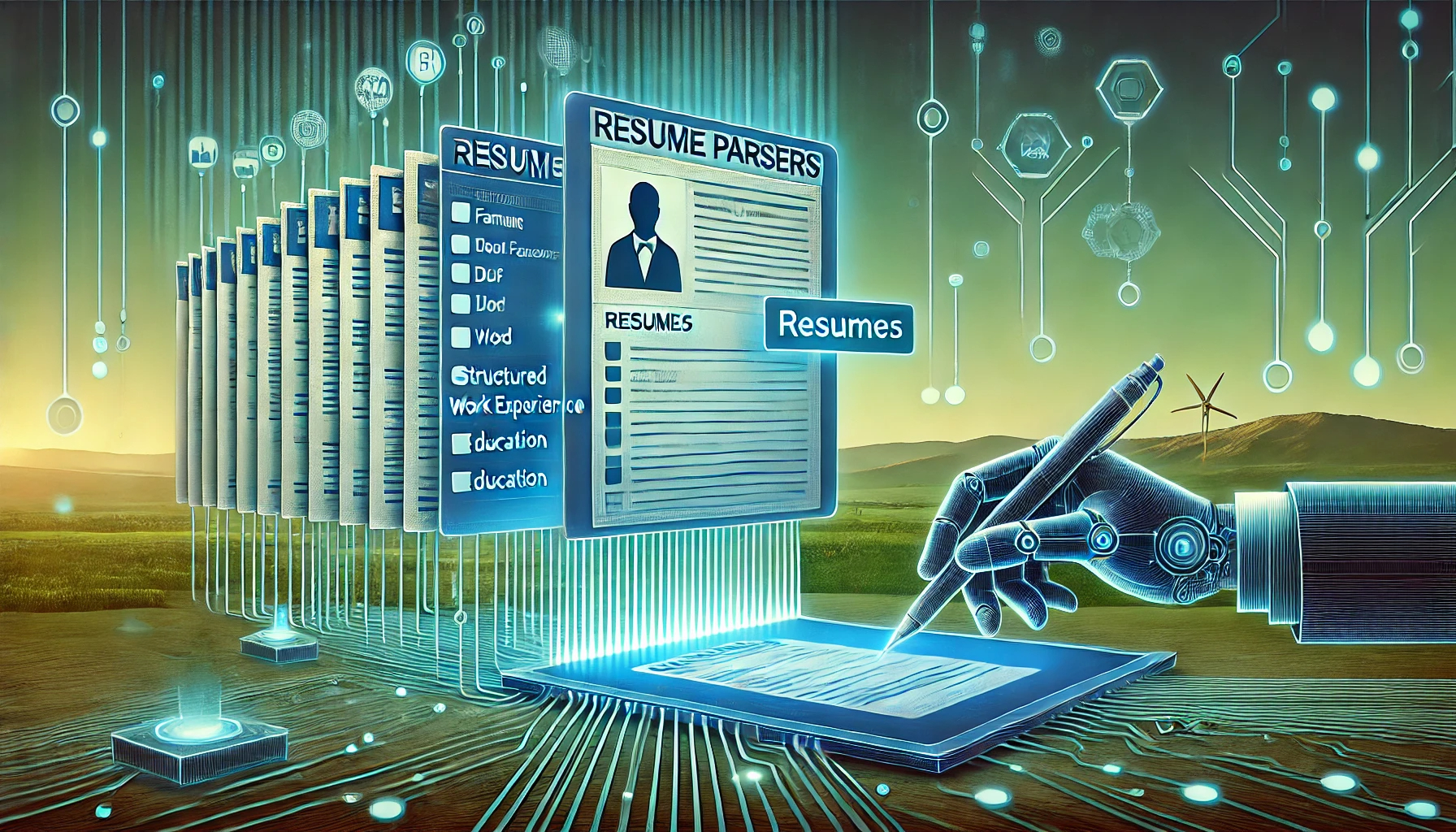Understanding Resume Parsers: How They Work and Why They Matter
In today's fast-paced job market, companies receive hundreds, sometimes thousands, of applications for a single position. Sorting through these applications manually is not only time-consuming but also prone to human error. This is where technology steps in, with tools like resume parsers playing a crucial role in streamlining the hiring process.
What is a Resume Parser?
A resume parser is a software tool that automatically extracts and organizes the relevant information from resumes and CVs into a structured format. It takes the unstructured data from a resume—such as text in different fonts, tables, and images—and converts it into a structured format that can be easily understood by an Applicant Tracking System (ATS) or other HR software.
Resume parsers are designed to identify key sections of a resume, such as:
- Contact Information: Name, email address, phone number, and sometimes LinkedIn profiles or other professional social media links.
- Work Experience: Job titles, company names, employment dates, and responsibilities.
- Education: Degrees earned, institutions attended, and graduation dates.
- Skills: Both hard and soft skills, often categorized to match specific job requirements.
- Certifications: Any relevant certifications or licenses.
- Achievements and Awards: Notable recognitions that set the candidate apart.
How Do Resume Parsers Work?
Resume parsers rely on a combination of natural language processing (NLP) and machine learning algorithms to accurately interpret and extract data. Here’s a step-by-step breakdown of how they work:
Data Input: The parser receives resumes in various formats, such as PDF, Word, or plain text.
Text Extraction: The software extracts text from the document, breaking it down into readable segments.
Pattern Recognition: Using NLP, the parser identifies patterns and keywords that correspond to specific resume sections, such as "Work Experience" or "Education."
Data Structuring: The extracted data is then organized into a structured format, usually in the form of a database or XML/JSON files. This structured data can be easily processed by an ATS or other HR systems.
Data Output: Finally, the structured data is presented in a format that hiring managers or recruiters can quickly review or that an ATS can use to match candidates to job requirements.
Benefits of Using a Resume Parser
The use of resume parsers offers numerous advantages for both employers and job seekers:
Efficiency: Resume parsers significantly reduce the time spent on manual data entry and resume screening. A task that might take hours or even days can be completed in minutes.
Consistency: Parsers apply the same criteria to all resumes, ensuring a fair and unbiased screening process. This consistency helps in reducing human errors and biases that can occur during manual screening.
Improved Candidate Matching: By structuring data in a standardized format, resume parsers enable more accurate matching of candidates to job requirements, enhancing the quality of hire.
Better Data Management: The structured data from resume parsers can be easily integrated into an organization's HR systems, making it easier to manage and analyze candidate information.
Enhanced Candidate Experience: For job seekers, resume parsers can ensure that their resumes are properly understood and evaluated, increasing their chances of being considered for the right opportunities.
Challenges and Considerations
While resume parsers offer many benefits, they are not without challenges:
Accuracy: The accuracy of resume parsers depends heavily on the quality of the software and the complexity of the resumes. Some parsers might struggle with resumes that have unusual layouts or formats, potentially leading to incorrect data extraction.
Customization: Organizations may need to customize their parsers to align with specific job roles or industries. This customization requires technical expertise and can be time-consuming.
Privacy Concerns: Handling sensitive personal data requires strict adherence to data privacy regulations. Companies using resume parsers must ensure that they comply with laws like GDPR to protect candidate information.
Over-Reliance on Keywords: Some parsers rely heavily on keyword matching, which might overlook qualified candidates who use different terminology or phrases in their resumes. This can be a disadvantage for job seekers who don’t use the exact language expected by the parser.
Future Trends in Resume Parsing
The field of resume parsing is evolving rapidly, with advancements in AI and machine learning leading to more sophisticated and accurate tools. Some emerging trends include:
Contextual Understanding: Future parsers will likely have better contextual understanding, allowing them to interpret complex sentences and relationships within the resume, rather than relying solely on keywords.
Multilingual Parsing: As companies expand globally, the ability to parse resumes in multiple languages will become increasingly important.
Integration with AI: Integration with AI-driven tools for predictive analytics and candidate scoring could further enhance the hiring process, making it more efficient and accurate.
Conclusion
Resume parsers are an invaluable tool in modern recruitment, offering efficiency, consistency, and improved candidate matching. However, like any technology, they come with their own set of challenges and require careful implementation and ongoing refinement. As AI and machine learning continue to advance, we can expect resume parsers to become even more powerful, making the recruitment process faster, fairer, and more effective for everyone involved.
For companies looking to stay ahead in the competitive job market, investing in high-quality resume parsing technology is no longer just an option it’s a necessity. If you're looking to create a resume that stands out and is optimized for these advanced systems, platforms like mycvcreator.com offer powerful tools to help you craft a professional resume that gets noticed by both resume parsers and hiring managers alike.









